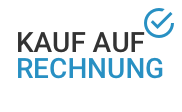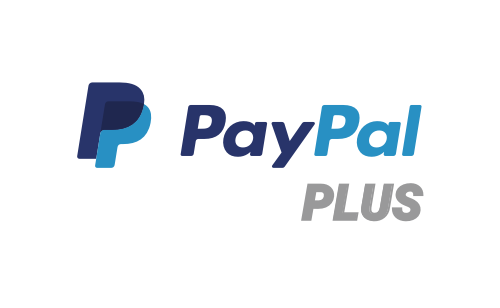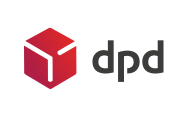Kick-start the learning motor!
Greater impact through skilful reflection
I hear again and again how colleagues let the opportunity for reflection pass and perform learning projects simply for the sake of being active. Yet, it is only really possible to kick-start the “learning engine” to drive development at both the personal and group dynamics level when the reflection stage is done properly. Not reflecting is a little like letting the engine stall just after turning the ignition key. This is a pity, because you then don’t get the full benefit from your learning projects. The problem with bypassing the reflection stage is that the participants simply file the learning project under “game” and do not properly understand the link to their everyday lives. A wasted opportunity!
When done properly, the true potential of reflection is multilayered: Firstly, there is the meta-perspective, which is achieved when we view an experience from a dis- tance. When we review something that has happened in this way, the learning process is completely different and is also processed differently by the brain.
Furthermore, reflection has a decelerating effect, a little like slow motion: It is easier to really understand the interdependencies in the group, as well as the misunderstandings which, in the heat of battle, may have resulted in wrong decisions being taken.
It also becomes possible to better address emotions, thereby enabling a more in-depth exploration of the process to be made. On top of this, learning as such remains exciting – for, whenever the participants are able to ask and answer important questions themselves, a greater personal meaningfulness is created.
The latter case illustrates the importance of the setting in which reflection takes place: above all, it should create openness and a safe space. The second key factor influencing the effectiveness of reflection is, of course, the questions that are asked. Both forces involved in reflection – setting and questions – mutual- ly reinforce each other and should be carefully chosen for each group.
Greater impact through skilful reflection
Typical “learning brakes” occur during reflection when:





The following elements could be useful for creating an effective reflection process:





Active, dynamic reflection
Effective reflection can also be compared to having a good conversation with someone. There can be an infinite number of variations and a broad range of variations is always more effective than if the reflection process always follows the same boring pattern (such as the “trainer asks – participant answers” patern). And, at the same time, the setting also plays an important role. For example, having a discussion around a campfire is different from having one in a seminar room. It is also inte- resting to note that the physical act of walking and talking sometimes creates a unique sense of momentum, because external (physical) movement also results in internal movement. When transferred over to the methodology of reflection, this means that it is also important to skillfully bring the participants together in the reflection process and to inspire them through using a variety of methods.
That’s why I would like to show you a handful of tried and tested methods for creating active and lively reflection.
Greater impact through skilful reflection
A. REFLECTION AS KICK-OFF
Looking back – Looking ahead ((Material: 1-2 ScenarioCards sets per 20 participants)
As part of an annual company meeting, the trainer invites the participants to reflect on the previous year. The trainer puts up several flipcharts around the room that each pose one specific question. In small groups, the participants go from question to question and select ScenarioCards that they feel best answer the questions, which they then pin to the flipchart, adding add one or more com- ments. Possible questions could be: “What were the key successes?”; “What were the big challenges?”; “What were the most important changes?”; “Where were we particularly good at dealing with difficulties?” Following this, the cards and comments are presented to the whole group. In the next step, the trainer once again puts up pre-prepared flipcharts, which could include the following questions: “What competencies do we want to develop?”; “What will be of particular importance over the coming year?”; “What am I looking forward to?”
Greater impact through skilful reflection
B. AFTER A LEARNING PROJECT
The talking rope
(Material: Rope of around 50-80 feet in length (depending on the size of the group), e.g. in red from METALOG®)
The trainer ties two different knots in a rope, such as a smaller one with a loop and a bigger one, which at the same time knots the rope into a circle. The rope must be long enough for all participants, who are sitting on chairs in a circle, to be able to hold it with both hands. The reflection process involves passing the rope around the group until one of the knots reaches the next person. When a participant receives the big knot, he or she can hold it and make a statement that the others can comment on. When one of the participants is handed the smaller knot with the loop, he or she can also hold it and ask a question that the rest of the group answers. This creates a very intriguing momentum.
Play it again (Material: remote control, microphone, or replicas of both)
This form of active reflection creates excitement, is incredibly good fun, and generates a lot of new information. The trainer introduces the idea of the remote control and the micropho- ne. Using the two aids, particularly interesting scenes can be
- replayed (“Let’s look at the scene again from the point when...”),
- paused (“And now stop!”)
-played in slow-motion or backwards.
Then the trainer hands the remote control to one of the participants and the microphone to another. Both choose the first scene that the group should replay. The person with the microphone can interview the individual actors. Some good questions are, for example: “How are you feeling now?” or “What are you thinking about right now?”
FacilitationBalls (Material: METALOG® FacilitationBalls 1 and 2)
The FacilitationBalls are sophisticated reflection tools that provide fantastic support for reflection at practically any stage of the group process. The key factor is how we work with them. The trainer selects three balls, e.g. hand, heart, key (it is of course possible to work with even more balls). Then he or she explains the task and the first ball: “I would now like to reflect with you on your experiences of the learning project. To do so, I will throw these three balls around the group (the trainer holds up the three balls). Anyone who is holding one of the balls when I say “stop” is invited to say something.” Then the trainer explains the meaning of the first ball and throws it to one of the group members. While the trainer explains the meanings of the other balls, the person who caught the first ball has time to think about what he or she wants to share with the group. Once the first person has spoken, he or she throws the first ball to someone else who hasn’t yet had a ball. Then the person who has been thrown the second ball by the trainer speaks. And so on. In this way, each person who catches a ball has a little time to think about what he or she wants to say. Furthermore, the reflection becomes more varied and achieves greater depth.
FacilitationBalls and written reflection
Following the learning project, the trainer asks the group to reflect on their experiences by preparing written answers to three questions. The three questions could be:
1. “How did I feel?”
2.“Who or what supported me?”
3.What were key situations for me?”
Then the trainer throws the balls into the group as described above. In so doing, he or she chooses balls that could represent the written questions. In our example: 1. heart, 2. hand, and 3. key.
Greater impact through skilful reflection
C. AT THE END OF THE GROUP PROCESS
Clothesline (Material:clothesline of around 60-100 feet in length, clothes pegs, blank facilitation cards, 1 set of EmotionCards 1 and 2 per 15 participants)
At the end of a workshop or seminar, spread EmotionCards out on a table. The participants are asked to take one EmotionCard each and to write down the three most important lear- ning experiences they had on the back of the card. The picture cards are then attached to the previously suspended clothesline using clothes pegs. Then the participants go around in pairs and look at the cards and what is written on them while reflecting on the question: “Which of the others’ learning experiences do I share and to what extent are mine different?” This results in a wonderful concluding “learning walk” that allows the learners to review all of the topics and themes they covered. Each participant may then take his or her own card home as a “memory anchor.”
Fever curve (Material: 1 - 2 sets of ScenarioCards per 20 par- ticipants, flipchart and pens)
In small groups of 2-5, the participants are given the task of drawing a “fever curve” on how the entire workshop went. The peaks and troughs of the curve are to be labeled and a ScenarioCard attached. When the groups are finished, the whole group goes from curve to curve together and present their experiences.
Feedback gifts (Material: EmotionCards 1 & 2 per 15 parti- cipants)
The group is divided into 2 or 3 subgroups, who each prepare a “feedback gift” for the members of another group. The gift is an EmotionCard representing one of the strengths that the parti- cipants experienced in the other participant. The second card formulates a wish that the subgroup has for the future of each individual participant (development feedback).
FacilitationBalls at the close of the day/ seminar (Material: FacilitationBalls e.g. set 1)
If you want more authentic and lively final rounds, I recommend the following approach:
Variation 1
At the end of the day/seminar, throw the balls into the group as described under “FacilitationBalls.” At the end, each participant should have had one ball and, hence, the oppor- tunity to give feedback.
Variation 2
Once you have explained the mea- nings of the balls, pass them around the group in a basket. Get your participants to choose one or two balls that they would like to say something about.
Be creative and daring in trying out new forms of reflection. As facilitator, step outside your “re- flection comfort zone” and leave safe bet routines behind you. For example, why not try reflecting on the reflection, almost like taking a meta-me- taperspective? And how about if we facilitators were also to see ourselves as learners? Because, in reality, as the US trainer Christina Hall likes to say: “Learning is an ongoing process.”
Trainer's case
What should be in your trainer’s case to make sure you are prepared for all reflection scenarios?















